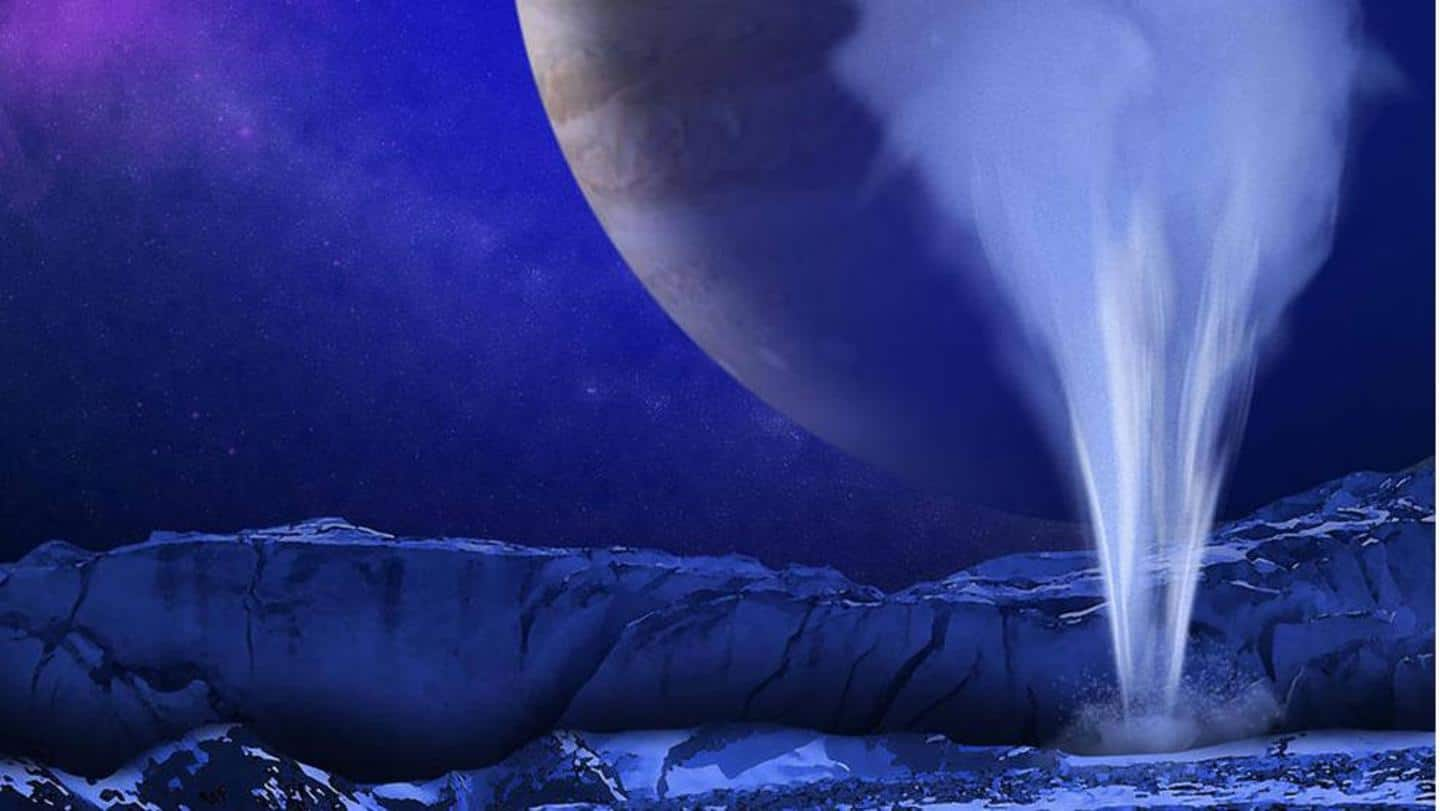
Is water closer than we think on Europa's icy crust?
What's the story
The National Aeronautics and Space Administration (NASA) has predicted a large subsurface ocean on Europa, Jupiter's smallest Galilean moon, may contain more water than the combination of Earth's oceans.
Recently, based on observations from NASA's Galileo Orbiter, salty liquid reservoirs are predicted to exist within Europa's icy crust.
This discovery might be significant to the Europa Clipper mission, which will be launched in 2024.
Context
Why does this story matter?
As we know, several space exploratory missions are launched with the objective of probing for signs of habitability.
According to NASA, the objective behind the Europa Clipper is to conduct extensive investigations in order to uncover possibilities of life at the subsurface of the Jovian moon.
Scientists may consider directing the Clipper to these water-based locations on Europa to gather more information.
Research
Water could erupt as 'plumes of vapor' from Europa's subsurface
The existence of salty reservoirs at Europa's subsurface would render it 'the most accessible liquid water bodies in the outer solar system,' according to a report in The Planetary Science Journal.
The research, which involves computer-based modeling, confirms that water eruptions originate from these icy shallow lakes and not from the large subsurface ocean of Europa.
Reason
What is the reason behind the eruptions?
According to the research, these reservoirs would lie at a brittle, icy region located 4-8km from Europa's surface.
"As the pockets of water freeze and expand, they could break the surrounding ice and trigger eruptions, much like a can of soda in a freezer explodes. And pockets of water that do burst through would likely be wide and flat like pancakes," explains NASA.
Future studies
The Clipper's ultraviolet spectrograph can capture plumes of water eruptions
The Europa Clipper which is expected to arrive in Europa in 2030 will be equipped with an ice-penetrating instrument named 'Radar for Europa Assessment and Sounding: Ocean to Near-surface' (REASON) to look for water bodies below and within Europa's icy crust.
The Clipper will also port thermal and visible-light cameras to capture the moon's surface and an ultraviolet spectrograph to study its atmosphere.